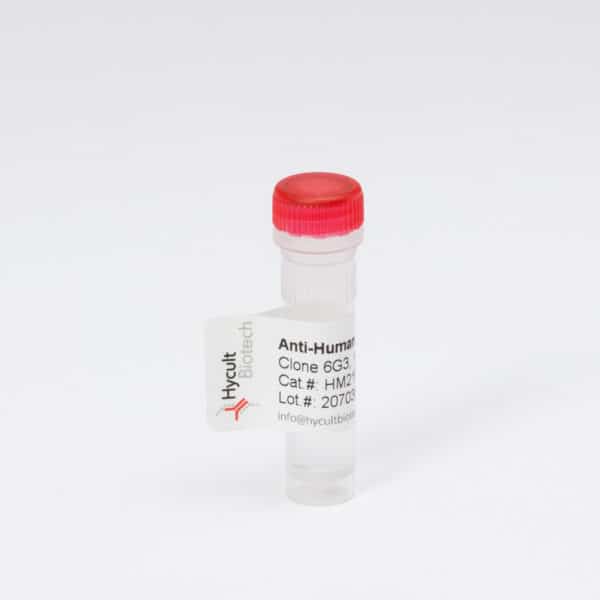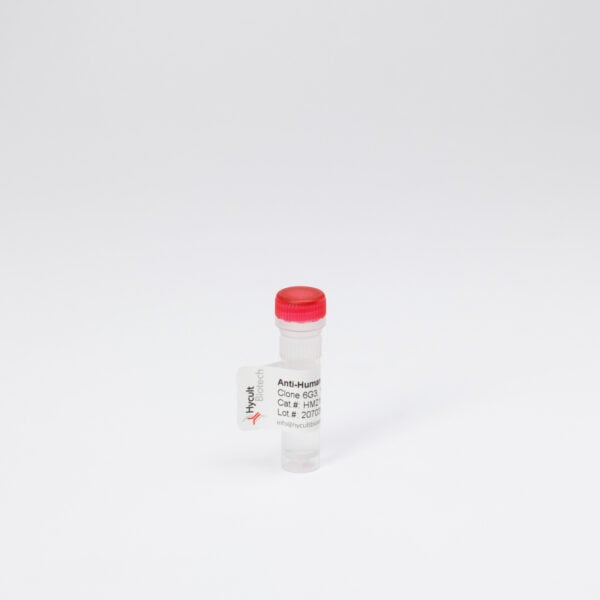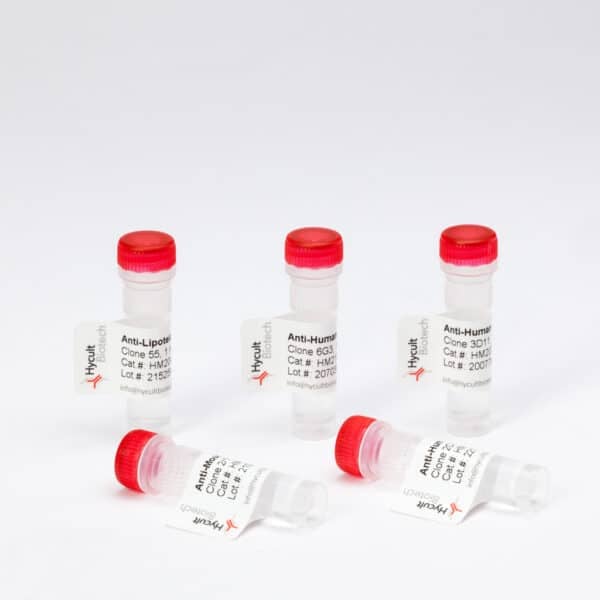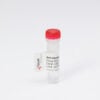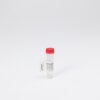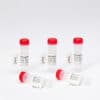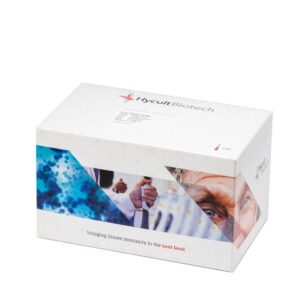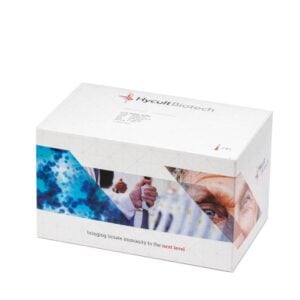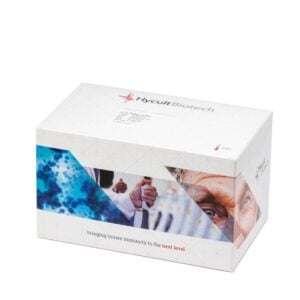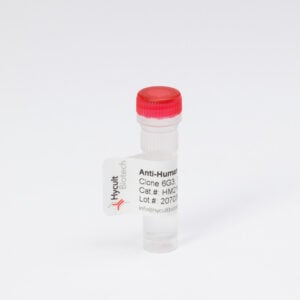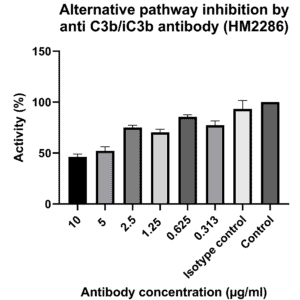C3b/iC3b/C3d, Human, mAb 1H8
The monoclonal antibody 1H8 recognizes Complement Factor C3b/iC3b/C3d, it specifically binds human C3 as well as the breakdown products C3b, iC3b and C3dg.
Read more€139.00 €431.00Price range: €139.00 through €431.00
The Critical Role of C3b/iC3b/C3d in the Complement System Activation
C3 plays a crucial role in our immune system, ensuring it functions correctly through two main pathways: the classical and the alternative pathway. People with insufficient C3 have a higher risk of contracting bacterial infections. This fact underscores the importance of C3 components, namely C3b, iC3b, and C3d, in defending our bodies against infections.
C3-convertase and Its Impact on C3b/iC3b/C3d Formation
A heterodimer of activated C4 and C2 forms one form of C3-convertase, known as C4b2a. This enzyme plays a crucial role in actively cleaving C3 into C3a and C3b during activation in both the classical and lectin pathways. C3a acts as an anaphylotoxin and a precursor to cytokines like ASP, while C3b functions as an opsonizing agent. Factor I actively cleaves C3b into C3c and C3d, a process that significantly enhances B cell responses. This underscores the essential roles of C3b, iC3b, and C3d in the immune system.
Alternative Pathway and the Dynamics of C3b/iC3b/C3d
In the alternative complement pathway, C3 is cleaved by C3bBb, another form of C3-convertase, consisting of activated C3 (C3b) and factor B (Bb). The activation of C3 to C3b reveals a reactive thioester, crucial for its binding to various surfaces. The complex C3bBb, known as the alternative pathway C3 convertase, plays a significant role in this process.
Regulation and Clinical Implications of C3b/iC3b/C3d
The process to turn off C3bBb, a part of our immune system, involves a few steps. First, a part of it called Bb is removed by something called decay-accelerating factor (DAF). Then, C3b, which is a piece of C3bBb, gets broken down into smaller pieces. It first turns into iC3b, then into C3c and C3dg, and finally into C3d. This breaking down is helped by Factor I and CR1. This whole process of breaking down C3b into smaller parts is really important for controlling how active our immune system is.
Checking the levels of C3 in the blood, including its parts like C3b, iC3b, and C3d, is really helpful for doctors. It can give them clues about certain health problems. For example, if someone has low levels of C3, it might mean they have a specific type of kidney disease such as post-infectious glomerulonephritis or shunt nephritis. So, these parts of C3 are really important for figuring out certain medical conditions.
Not sure which C3 antibody to use?
With numerous options available, it is essential to select the right C3 antibody to ensure the success of your research. We designed a guide to assist you in making an informed decision:
Go to our C3 researcher’s guide and choose the right antibody
You may also like…
-
C3c, Human, ELISA kit
Cross reactivityCynomolgus monkey – Yes, Mouse – No, Pig – No, Rabbit – No, Rat – NoView product €858.00 €1,413.00Price range: €858.00 through €1,413.00 -
View product €786.00 €1,271.00Price range: €786.00 through €1,271.00
-
C3d, Human, ELISA kit
Cross reactivityCynomolgus monkey – Yes, Horse – No, Mouse – No, Pig – No, Rat – NoView product €929.00 €1,500.00Price range: €929.00 through €1,500.00
You may be interested in…
-
View product €139.00 €431.00Price range: €139.00 through €431.00
-
View product €139.00 €1,294.00Price range: €139.00 through €1,294.00
-
View product €139.00 €9,220.00Price range: €139.00 through €9,220.00
